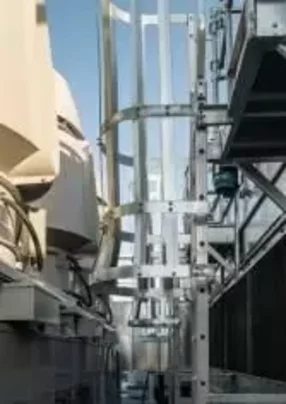DPR Construction and BioMarin applied for a building permit in June 2014, joining forces to expand BioMarin’s research and development facility in downtown San Rafael (ultimately bringing the developmental sciences group to BioMarin’s main administration campus). The project officially broke ground on the development in August of that same year—and it’s been on the fast track ever since.
BioMarin Principal Engineering Project Manager Jim Redenbarger recently spoke about the collaboration and how BioMarin originally acquired DPR Construction’s assistance, stating: “DPR is known for doing excellent work and proved that they were best suited for this project.”
“This type of project is in DPR’s core market,” DPR Construction Project Manager Tim Kueht said. “We are always searching for different projects that allow us to be collaborative and push forward in the industry, versus staying with old and traditional practices. We enjoy working with partners, subcontractors, and various people in the community to develop a relationship and joint understanding of the work process in order to complete a project.”
While a structure to this degree often takes at least three years to complete from design to develop to build out, the center is slated to be finished in December 2015—just 18 months after starting.
The factors behind this turnaround time can be contributed to a range of qualities, but collaboration is the one that seems to be the most significant.
“When it comes to building, everyone is ready to go—every member of the team is completely onboard,” Kueht stated.
Tackling challenges to the expansion
This expansion project has been put into motion to create a facility that will accommodate all research needs. Most importantly, this is a solid design that can help accomplish a magnitude of goals, including the ability for departments to be switched out and restacked and even turned into laboratories.
Also due to this expansion, more collaboration within the building will be able to take place. Redenbarger noted that the various features of the building will be a way to bring people together.
“This expansion is already proving its worth,” he stated. “Science equals change, and we are accommodating that change with this building.”
The building is located in a very urban setting and there have been a few challenges—challenges that Redenbarger, Kueht and their respective teams have been able to overcome.
For example, schedules have proven to be particularly daunting, as has the task of getting all of the right materials in order and in a timely manner. Then there’s finding the manpower—both Redenbarger and Kueht agreed that it’s not just about getting people, but the right people for the right job.
“This entire project is a highly collaborative effort,” Kueht explained. “It takes everyone involved to help achieve overall goals.”
Whether it’s been the challenge with the foundation, the various bay conditions or the different restrictions that were put into place, the team has been able to work together to overcome them.
“DPR is very good at identifying challenges early on—sometimes even before they happen,” Redenbarger said. “They’ve resolved issues, which has ultimately saved the project time and money.”
There is a central utility plant on the roof of the building that has been quite demanding due to the fact that a lot of equipment has to fit into such a tight space. It’s important for employees to work safely in the small quarters. This is where technology and having a model of the building came into great assistance.
Technology and the assistance of BIM
Both Redenbarger and Kueht have acknowledged the importance of Building Information Modeling (BIM) and how this type of technology has not only assisted all involved parties with efficiently handling the expansion, but also allowing workers to stay on track to complete the project on schedule.
“Because of BIM, everyone has access to the model and all of the building information,” said Kueht “The designing and detailing information we have can be pushed through instantly, meaning BIM saves us a lot of time; BIM allows us to have a quicker and more efficient process.
“With BIM, we are accurately building with the most current information,” he added. “We are finally able to see the value of technology, as well as understand it and like it.”
Redenbarger agreed with Kueht’s positive feedback regarding BIM, adding, “BIM allows us to identify areas that need improvement so that we can then advance our skills and approach and move forward. We’re completely sold on the BIM process. It enhances the collaboration for all players on the project—everyone wins.”
Both Redenbarger and Kueht plan to continue using BIM going forward in their careers.
When asked about any other technological techniques being utilized, Kueht said, “We use the latest technology that is available, leveraging it and taking it the next level to produce faster and more accurate results.”
Commitment to achieving milestones
As with any project, one of the biggest—if not the biggest—goals is to deliver the build on time and on budget. And so far, this hasn’t been an issue with this expansion. As stated earlier, completion is looking to wrap up by year’s end; this is an aspect that everyone should be proud of accomplishing.
“That’s our goal,” Kueht started, “to have everyone involved in the project walk away completely satisfied and proud of their work from all aspects. It’s important that everyone is happy and had a good time being part of the project.”


